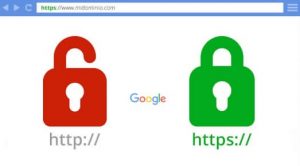Simple Ways to Protect Your Website- How Do I Protect My Website
There are several website owners that do not take adequate security measures to enhance their online security and protect their websites and blogs from attackers. It usually happens as they do not believe that their website contains anything worthy to attackers or they think they can’t get attacked.
This is a type of mindset that encourages the hacker to locate vulnerabilities and attack your website or blogs. If you are failing to implement necessary security measures to protect your website from attacks, then your customers are also at risk of fraud and identity theft.
To make sure that this never happens to you, here are the simple ways to secure your website against hackers.
Also, these steps won’t guarantee that your blog or website will never be attacked, but it will surely decrease the risk of happening:
Secure your Website against SQL Injection
An SQL injection is a type of attack in which the hacker uses the URL parameter to change your database and, therefore, gain access to your website.
If you are currently using a standard Transact SQL, you might be at the risk of becoming a victim of an SQL Injection attack. As it is very simple for a hacker to inject the code into your query, and gain access to your information and data.

To prevent this from happening, you must use a parameterized query that is easy to implement as most of the web languages have it. To stop the hacker from adding a query at the end of the statement, you must parameterize it.
By taking a look at the past few years, the number of compromised websites is increased by 32 percent. This is the reason why you must implement specific security measures, and securing your website against SQL injection attacks should be the first step you must take.
Install A Security Socket Layer
One of the best ways to add an SSL (security socket layer) to your website is by using HTTPS, and it is a type of protocol that enables you to send safe communication over your established network. It also makes sure that no intruder can gain access to your content.
This means that your users can browse your website safely while entering their essential information and login details.
Thus, you must always use HTTPS on your web pages where the customers can enter their sensitive information, like credit card information or login details. If a hacker steals it, they can quickly attack the user.
By implementing HTTPS, you can make your website more visible, because Google boosts those websites in the search engine rankings, which use HTTPS.
Guard Against XSS Attacks
An XSS attack is similar to other types of attacks, just like an SQL injection attack. It is specially designed to hack the users of a server or an application rather than the server or application itself.
Hackers can accomplish this by inserting malicious code into the output platform of a web application. They can inject malicious code into your cookies, comments sections, forums, and search fields. All of these areas are vulnerable to an XSS attack.
By injecting the malicious code, the hacker can gather the cookie data that contains sensitive customer information, like login information, session Ids, and credit card numbers.
The best way to protect your website from such an attack is by using a security development lifecycle, or an advanced SDL. The main function of an SDL is to limit the coding errors in your specific application.
If your customer has a cookie that can automatically log them into your website, you can still make them re-enter their login details again. This can surely reduce the chances of an XSS attack.
Watch Your Email Transmission Ports
Most of the attackers target your email rather than your website to access your information. But the good news is that there is an easy and quick way to identify how secure your email transmissions are.
If you are communicating via SMTP Port 25, POP3 Port 110, or IMAP Port 143 ports, then all your email transmissions are not secured.
On the other hand, if you are communicating via SMTP Port 465, POP3 Port 995, or IMAP Port 993, then your transmissions are secured, as all of these ports are secured through encryption.
Conclusion
These are the easiest and effective ways that can keep your website secure from hackers. As there is no 100 percent guarantee, but these measures can surely reduce the chances of getting attacked.





